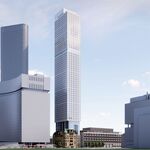Tuscani01
Senior Member
All good points, as well. I'm not saying that what I said is the only factor, but to say it isn't a factor in tendering large projects is wrong IMO.
I think the real question is why couldn't this be tendered as smaller projects to speed up the process and allow for a staged opening of segments as they are completed? Is cost really the only thing holding that back? If so, would you know how significant the cost difference would be?
Ie. The portion from Black Creek to Eglinton West could have been phase 1, Eglinton West to Yonge, or right to Leslie as phase 2, and the surface portion as phase 3.
And would the savings in staff (bus drivers), diesel, and equipment make up for the increase in cost to get phase 1 opened sooner? Surely the city and TTC would save quite a bit of money by no longer having to run buses along Eglinton West if that portion were to open sooner. Also factor in the cost of gridlock, lost ridership from construction delays, lost business, etc.




